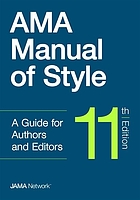Literature reviews should comprise the following elements:
 AMA manual of style : a guide for authors and editors
AMA manual of style : a guide for authors and editors
Visit your campus Writing Center for additional one-on-one assistance.